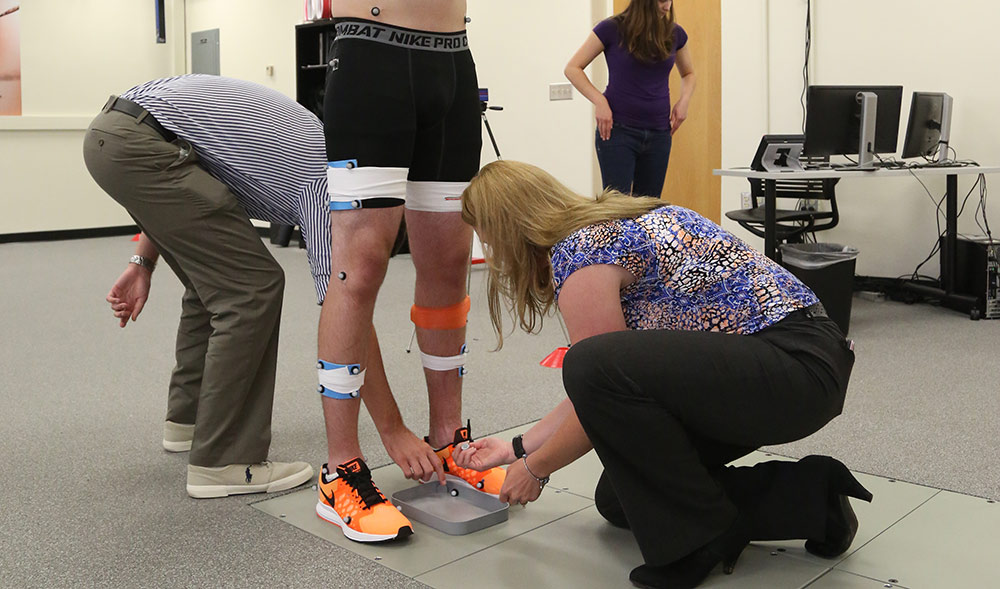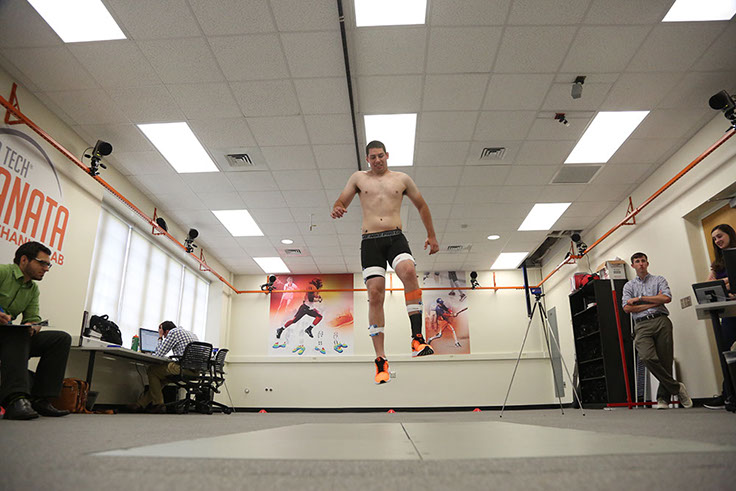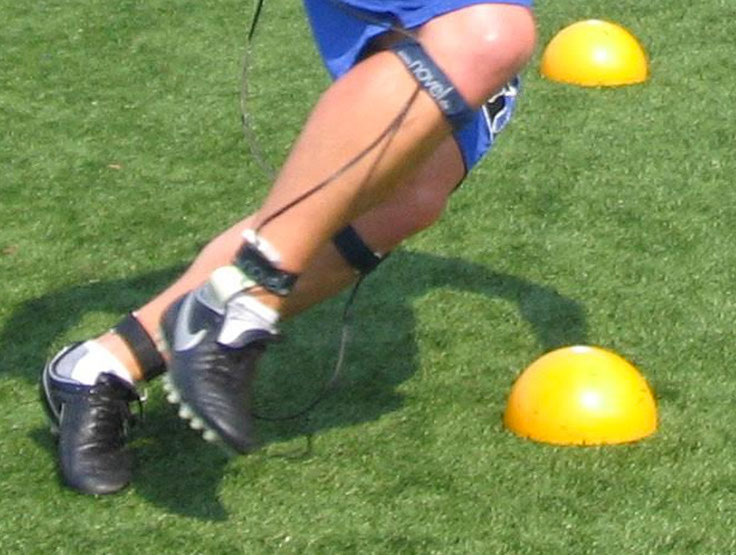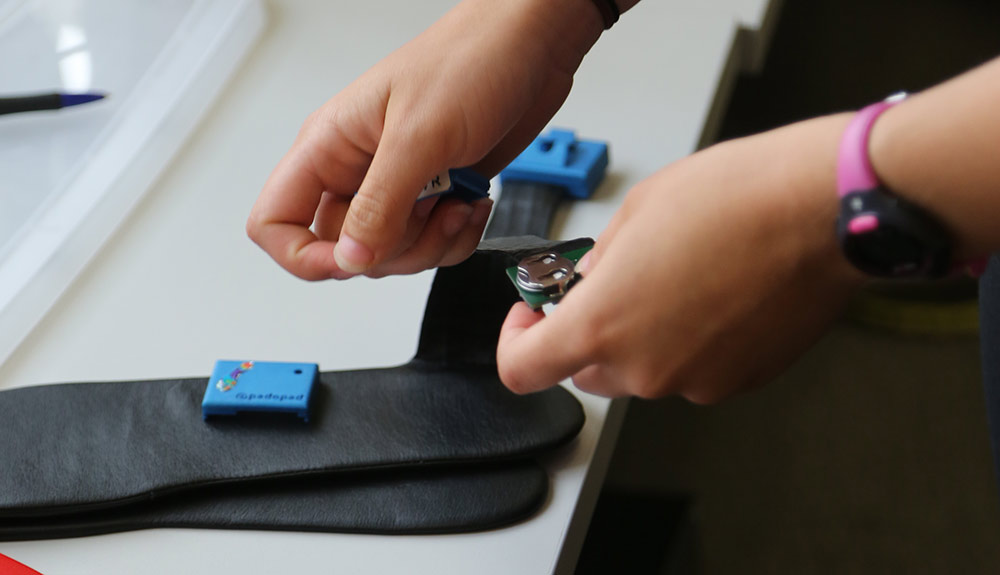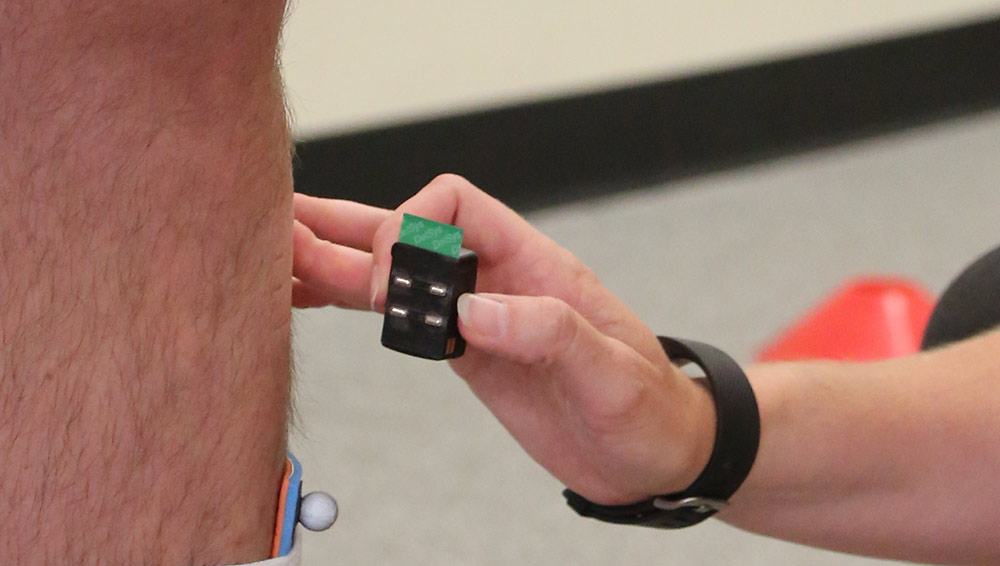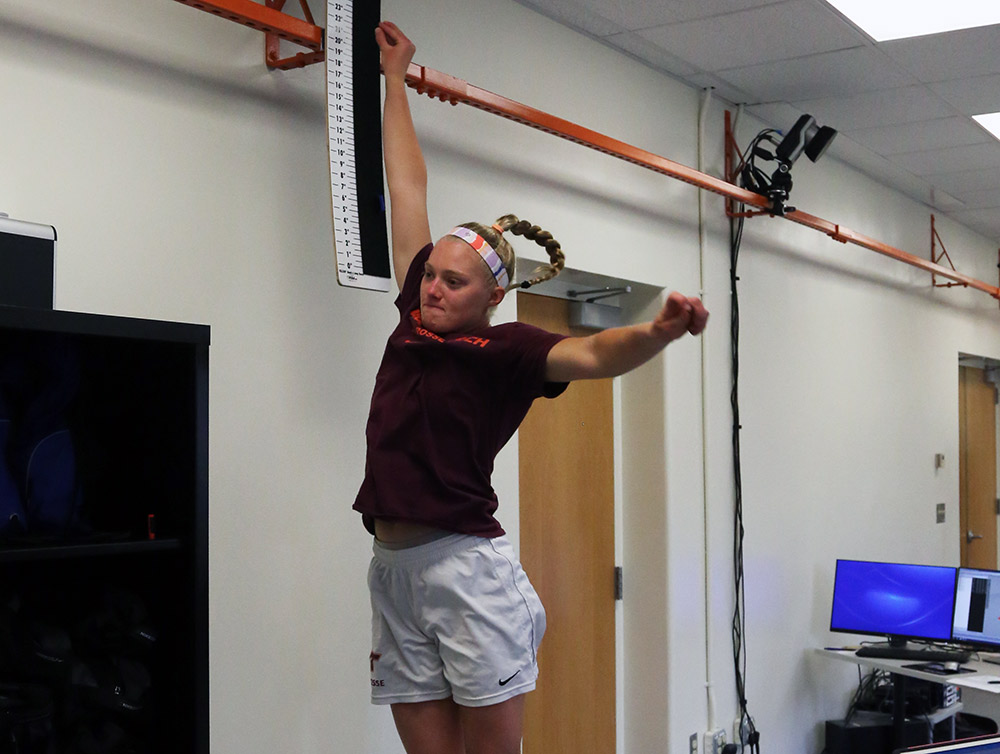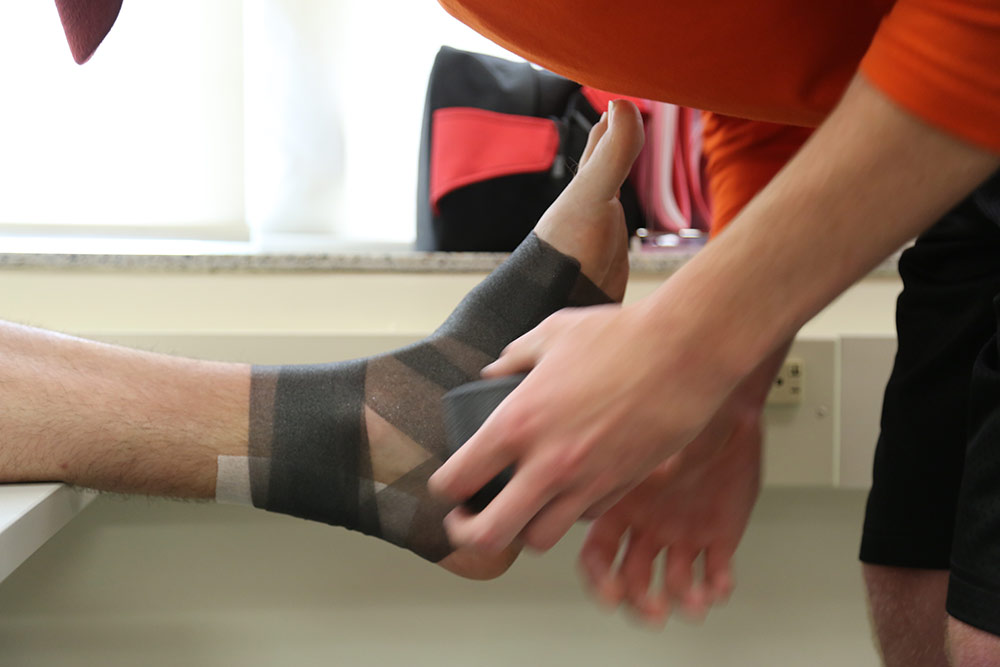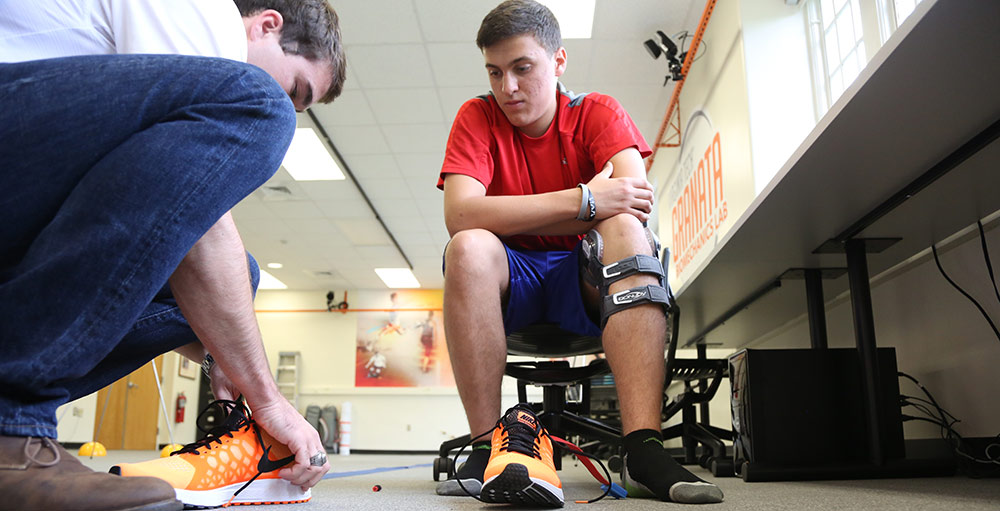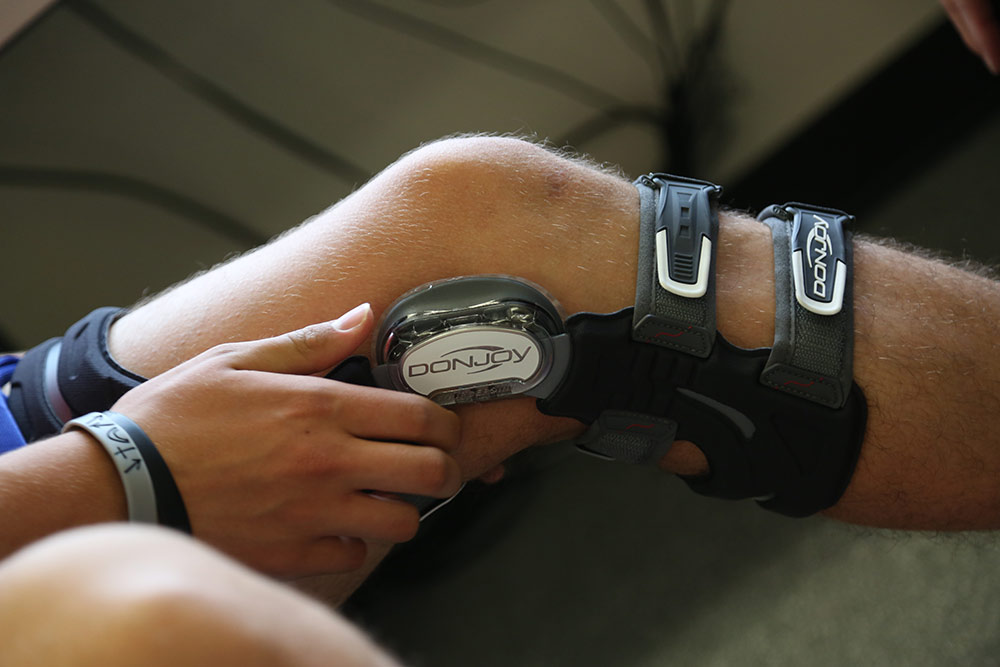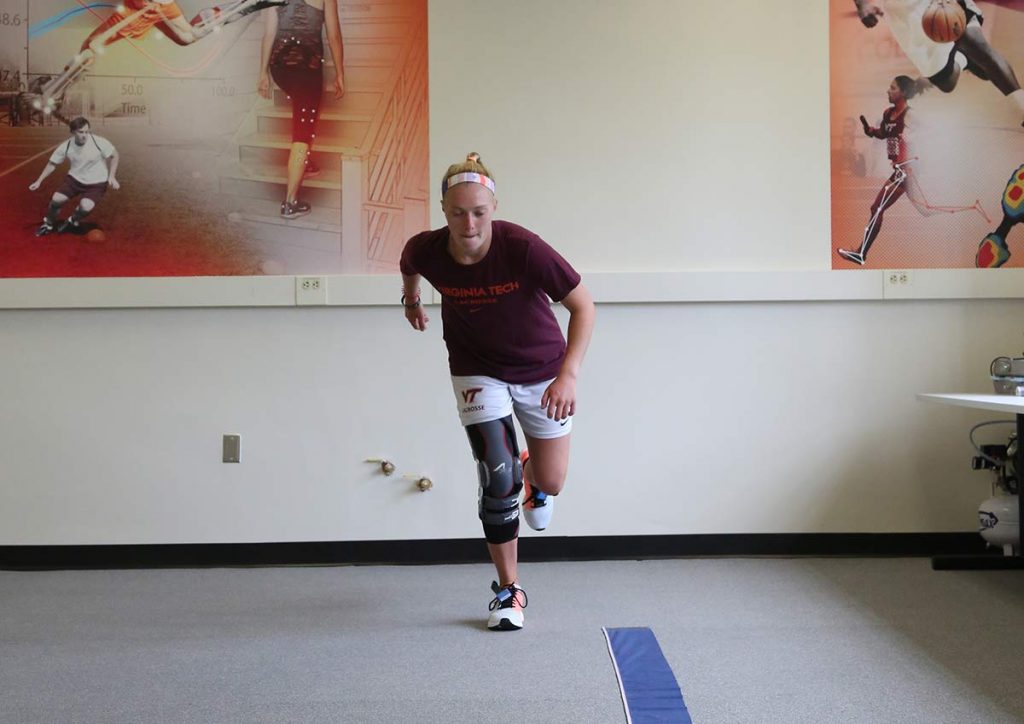Motion Analysis
The equipment used in the Granata Lab for monitoring three-dimensional kinematics are state of the art motion capture systems (Qualysis INC, Gothenburg, Sweden). One system is comprised of ten digital cameras (OQUS 7) that can sample between 3 and 12 megapixels at variable frame rates between 300 and 1100 frames per second at full resolution. Another similar system is comprised of eight digital cameras (MIQUS M1). These cameras are connected to one another and connected through Ethernet cables to the main data collection computers which are further linked to the Qualisys online web service. The OQUS 7 and MIQUS M1 cameras are used in conjunction with the QTM software (Qualisys, Gothenbjurg, Sweden), which allows data to be collected in real-time. The real-time collection and display of 3D data allows the lab staff the ability to complete biofeedback projects and provide immediate information to the subjects and patients that are being assessed in the lab. In addition to the QTM software, which is used for data collection and reduction, the Granata Lab uses Visual 3D (C-Motion, Germantown, MD) software for the processing and reduction of all motion analysis data. Finally the lab utilizes custom written Matlab software to complete any additional data processing.

